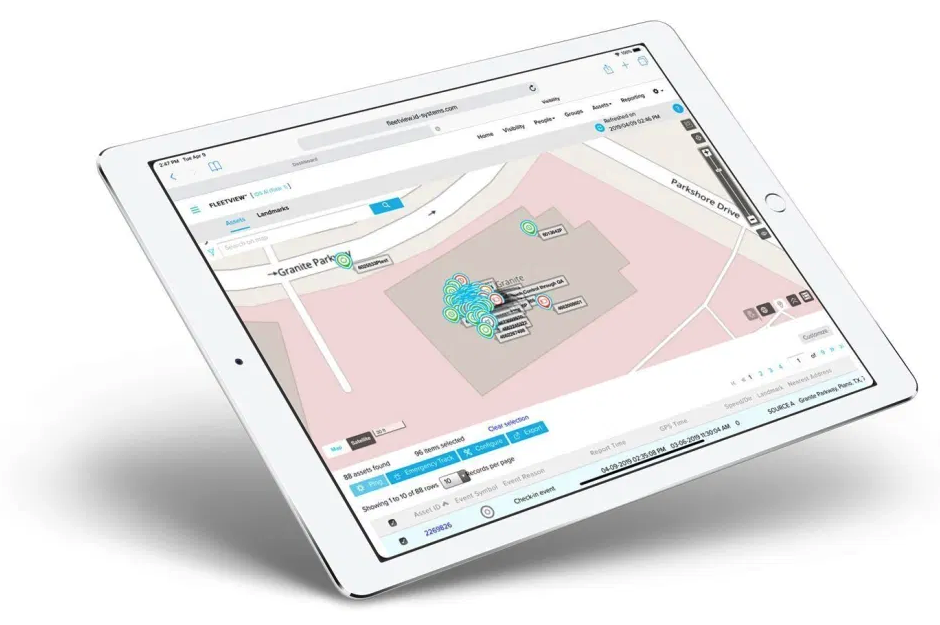The trucking industry has seen its fair share of capacity issues over the past several years. Even before COVID-19, the industry faced an ongoing driver shortage that has chipped away at independent truckers and small trucking companies that make up most of the industry. The pandemic and other recent factors have compounded these problems.
Let’s take a closer look at capacity issues facing the industry and how intermodal transportation and advanced telematics can address these challenges.
The COVID-19 pandemic has exacerbated the trucking industry’s capacity challenges—and telematics are critical to solving them.
Capacity Issues in Logistics
The logistics industry has experienced high demand for the movement of essential goods and pharmaceuticals throughout the COVID-19 pandemic. These demands are compounded by a secular trend toward ecommerce sales that require higher levels of shipments between distribution centers and customers throughout the country.
Capacity has also been impacted by several factors:
- Changing Demand Patterns: COVID-19 has had a mixed impact on the economy with some industries performing better than others. Trucking companies serving heavy industry, for example, have suffered from less demand whereas ecommerce distribution has seen a sharp uptick in demand—trends that are likely to continue.
- Fewer Trucking Companies: Trucking company failures nearly tripled in 2020 from the prior year as COVID-19 put pressure on smaller operators. These independent truckers and small trucking companies make up the majority of freight carriers, with 91% of fleets operating six or fewer trucks and 97% operating 20 or fewer trucks.
- Fewer Truck Drivers: The trucking industry had about 80,000 fewer drivers in 2020 from the prior year as federal stimulus increased unemployment benefits, making it possible for drivers to earn more staying home than being on the road. At the same time, truck drivers tend to skew older, and many are approaching retirement age.
- More Government Regulation: The CDL Drug & Alcohol Clearinghouse removed 40,000 drivers between January and September of last year due to failed test results while new hair follicle testing could eliminate five or ten times that amount. Existing tort laws also put smaller trucking companies in jeopardy when crashes occur.
At the same time that demand is on the rise, there are fewer containers and space available for freight due to driver shortages and other factors. These dynamics make it difficult for shippers to find a full truckload to haul freight to specific destinations and can cause a dramatic increase in full truckload pricing that impacts the entire market.
Intermodal Transportation
The most obvious way to address these challenges is through the use of intermodal transportation that combines trucks, freight trains and ships. In fact, fourth quarter 2020 intermodal loads were up nearly 10% compared to 2019, according to the Association of American Railroads, as rail executives hope to capture some trucking market share.
There are a handful of cases where intermodal makes sense for shippers:
- They’re transporting cargo over long distances (> 300 miles).
- Their cargo weighs less than 25 tons.
- Their cargo has an intermediate value.
- Cargo flow must be continuous in similar quantities.
Railroads work almost exclusively with intermodal marketing companies, or IMCs, that buy wholesale and sell to beneficial cargo owners, or BCOs. When choosing an IMC, shippers should ensure that they have policies in place to handle intermodal damage, visibility into shipments in transit (e.g., real-time EDI updates) and cargo insurance coverage in place.
The challenge is that intermodal requires a paradigm shift in the way that cargo is shipped to customers. For example, trailers are a suboptimal solution because they cannot be double stacked—a key advantage of containers—while international container owners don’t like their containers going too far inland and away from ports.
In addition, intermodal requires a change to load configurations compared to truckload operations. Shipments must be legal at both origin and destination ramps with a recommended maximum laden weight of 42,500 pounds and a maximum weight of 80,000 pounds. Loads also experience harmonic vibrations that will move a load laterally or longitudinally in transit.
Finally, the trucking industry could resolve its capacity issues and intermodal could see its own capacity problems in the future—as happened in 2018. The move may be necessary for some larger shippers that require the additional capacity, but for many smaller to mid-sized shippers, there may be better ways to address capacity issues.
How Telematics Can Help
A better way to solve capacity issues is by improving efficiency through the use of telematics and data. By integrating telematics devices, fork trucks and in-cab solutions, back-office logistics management portals and advanced analytics create transparency and efficiency at each point in the supply chain and eliminate many of the underlying causes of capacity issues.
For example, companies that embrace telematics can identify empty containers, validate drop-and-hook opportunities or alert a receiver of cargo shifts in transit that will require additional time to inspect, which can dramatically reduce turn times. Distribution centers can also use the data to be proactive in preparing for truck turns and dramatically cut down dwell time.

Powerfleet’s LV Series Analytics – Source: Powerfleet
There are several key capabilities to consider:
- Assets: Advanced analytics from a wide range of sensors can gather key performance indicators, enable data-driven decisions and streamline operations to better understand opportunities to improve efficiency.
- Yard: Sensors provide a real-time look at asset locations in the yard, enabling you to choose the closest options, obtain status updates like percent loaded or temperature, and search assets for different combinations of conditions.
- Reefers: Telematics make it easy to manage reefer engines, alarms and sensors without the trailer attached, record unit hours and fault codes for predictive maintenance and integrate with TMS platforms for accurate reporting.
- In-Cab: Advanced in-cab solutions go beyond ELD compliance to provide an automated driver’s log book that’s fully compliant with FMCSA rules, real-time information on driving time and remaining hours of service and support for multiple languages.
Powerfleet for Logistics provides a wide range of solutions for the shipping and logistics industry, including in-cab ELD-compliant solutions, solar-powered supercapacitors and batteries, freight cameras, integrated reefer sensors, advance sensors for container mounting, and full visibility of containers from when they’re moved from the yard to the final destination.
The Bottom Line
The trucking industry continues to face capacity issues from both long-term supply trends and the shorter-term impact of COVID-19 on demand. Intermodal transportation is one option to address some of these supply concerns, but a more sustainable option may be an investment in advanced telematics that can improve efficiency and drive better decision-making.
Contact us or find your local sales representative today to learn more about how Powerfleet for Logistics can help address capacity issues and improve your performance.




